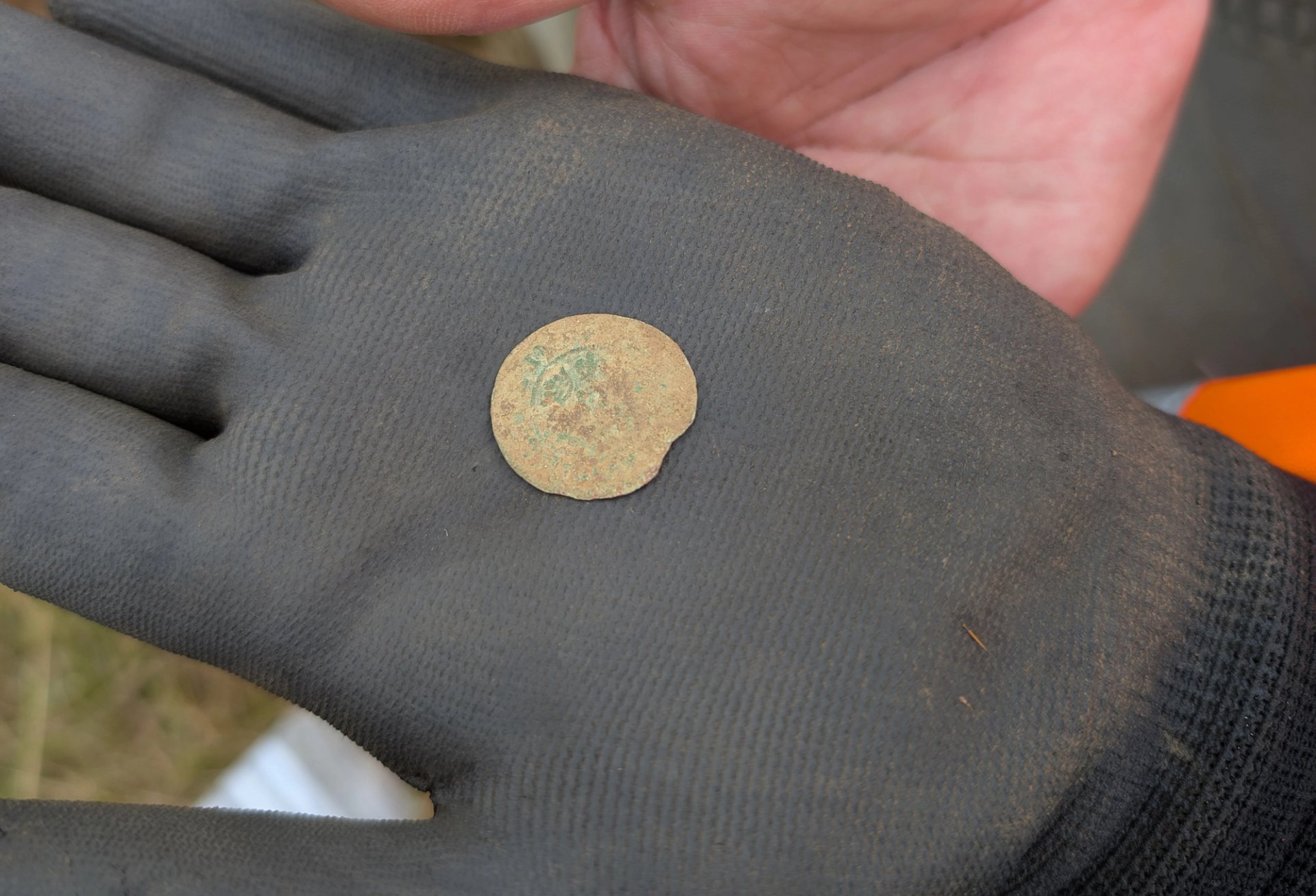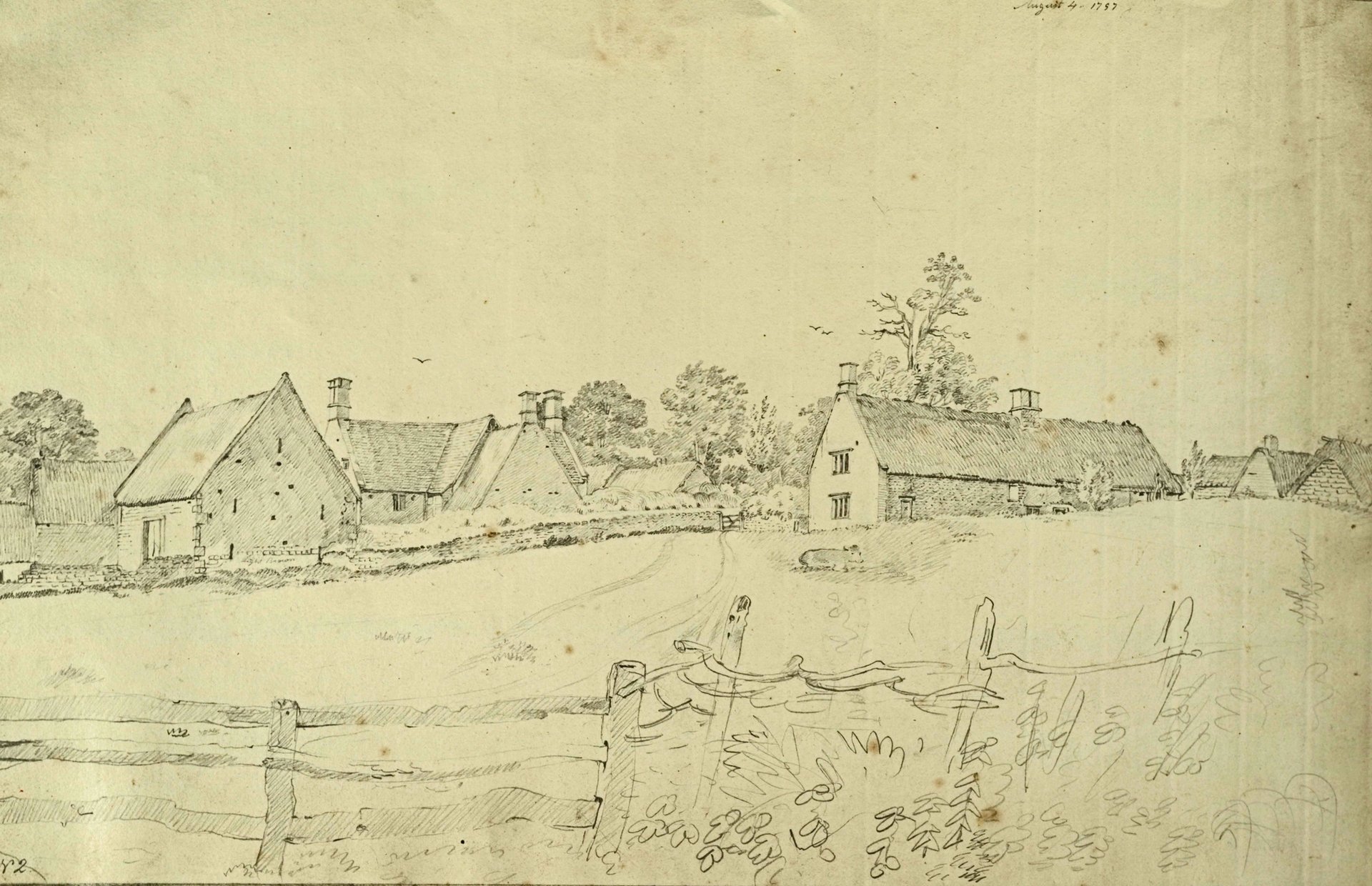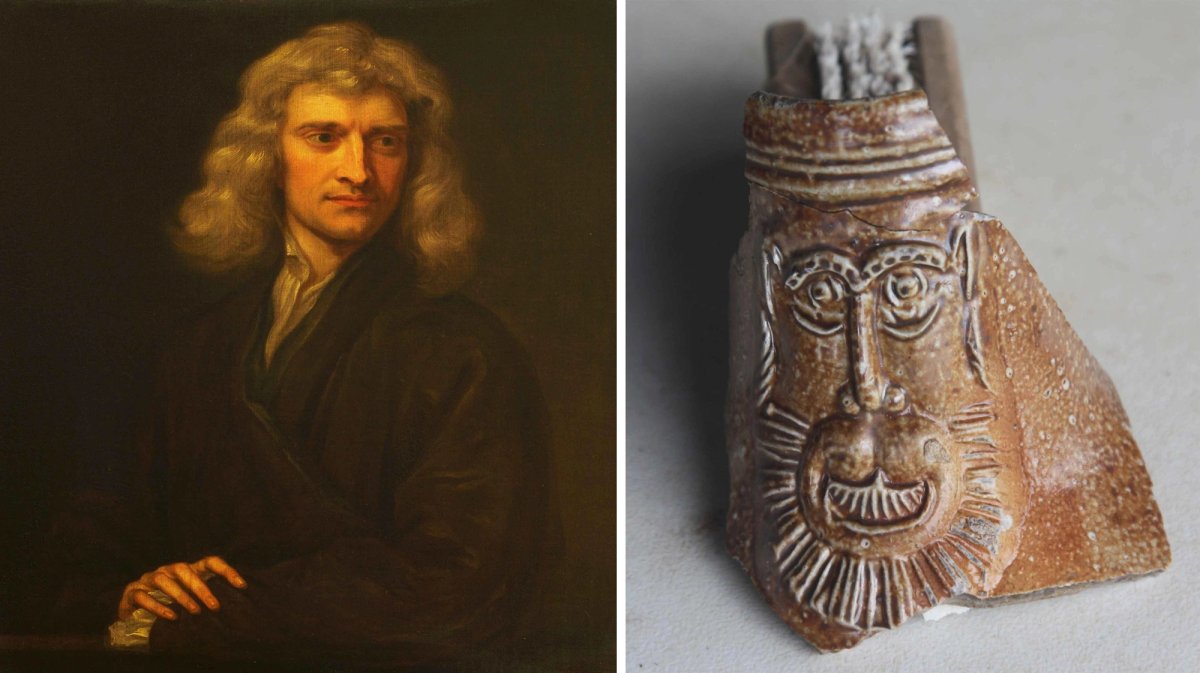Relics of the fragmented family life that helped to shape one of the world’s great scientific minds have emerged from the foundations of the home of Isaac Newton’s mother. The house, demolished 200 years ago, stood in the next field on from the famous apple tree which, according to legend, dropped the fruit that caused Newton to perceive the principle of gravity.
The house in Lincolnshire was just beyond Woolsthorpe Manor, where Newton was born and raised by his grandparents, after his mother left him when he was just three years old.
Families joined archaeologists from the National Trust and York Archaeology on the dig last month. The ten-day excavation uncovered rubble from the house, and lost and discarded domestic items including broken pottery, three thimbles—one child-sized—a broken needle and buttons, a 17th-century gaming token, and animal bones from family meals which Newton almost certain did not join.

A jetton gaming token found on the Woolsthorpe dig
© National Trust
Newton was born in 1643, three months after his father Isaac died. He was so puny and sickly—his mother said he could have fitted into a “quart mug”—that he was not expected to live. Three years later his mother, Hannah Ayscough, married a clergyman, Barnabas Smith, and left the toddler in the care of her mother. Newton detested his step father: in a catalogue of his own sins as a teenager he listed “threatening my father and mother Smith to burn them and the house over”. Many biographers have traced his later prickly personality—brilliant but anxious, outraged at any criticism of his work—to his difficult early life.
When Smith died, Ayscough returned to Woolsthorpe with her three children by Smith, and the house was built for her on family land, though the ten-year-old Newton continued to live at with his grandparents. Ayscough removed him from school a few years later and tried to force him to become a farmer, but as he sat reading under trees while flocks strayed, it was clear this would never happen. He was rescued by an uncle and returned to school, then went on to Cambridge where he became a brilliant scholar (but apparently an atrocious lecturer).

A 1797 sketch of Hannah Newton's house
© National Trust
Woolsthorpe Manor, where Newton conducted many early experiments on subjects such as light and optics after returning there to escape the Great Plague, was presented to the National Trust in 1942. The trust only acquired the site of his mother’s house five years ago. Although a 1789 sketch showed the house, it is believed to have been demolished after a fire in the early 1800s—and the exact location was lost until recent survey work.
National Trust archaeologist Rosalind Buck says the seemingly modest finds were precious. “The discoveries are such relatable objects and [represent] a real window into the domestic life of the Newton family,” Buck says. “We can really imagine Hannah and the family eating from items like the Staffordshire slipware, or using jugs like the one with that magnificent, embossed face. Were people potentially gaming with jetton pieces [gaming tokens] while domestic tasks such as sewing and repairing clothes were being done nearby?”
There are plans to display some of the finds in an exhibition in the manor house next year.


